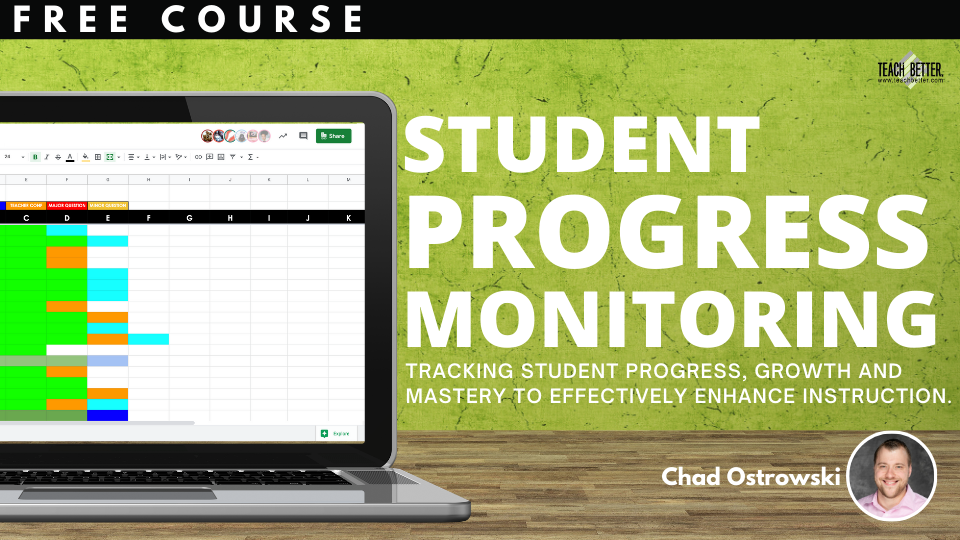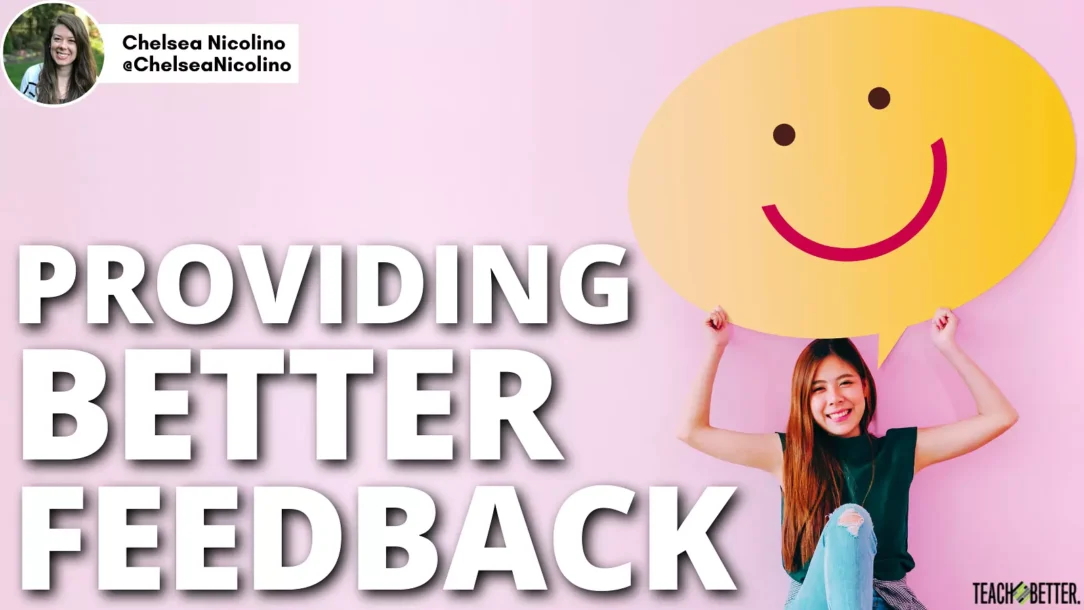TL;DR:
- Providing feedback to students is one of the most crucial aspects of our job.
- In this post, you will find five simple steps to incorporate effective and timely feedback to your students. (1) Classroom environment – establish norms and expectations for giving and receiving feedback. (2) Streamline grading practices – use the same grading rubric. (3) Use online tools for instant feedback. (4) Utilize your students as much as possible. (5) Practice what you preach—be open to receive feedback.
Chelsea joined Dave Schmittou on the last 12 Hour Live Event.
As an educator, providing feedback to our students is one of the most crucial aspects of our job. I often ask myself, Are my students really learning if I’m not providing feedback? Should I be the only one to give them feedback? What if they don’t receive the right feedback?
However, if you’re asking yourself these same questions, here’s the first one to consider on your feedback journey: What is feedback? I know, what a deep question! It’s the question that Dave Schmittou stumped me with on our Teach Better 12 Hour Live segment about, you guessed it, feedback.
To help you get started on your revamping how you provide feedback in your classroom, I’ve compiled a list of five simple steps to incorporate effective and timely feedback to your students.
Focus on just one step and see how it can transform how you provide feedback to your students. Every step counts, no matter how small. If you practice getting a little better each day, you will see the payoff soon enough. Click To TweetProviding Better Feedback – Step One: Classroom Environment
Take a moment to think about how your classroom is set up. How do you provide your students with feedback? How do your students request feedback? Are there systems in place to provide timely feedback? What about instant feedback? Do your students know what to do with feedback?
These were all questions I asked myself when I first started implementing The Grid Method in my classroom. Your students could be receiving the best feedback in the world, but if they can’t improve or don’t know what to do with it, then it’s not valuable. The first thing I did was establish norms and expectations for giving and receiving feedback.
Some simple activities you can incorporate with your students is getting them to brainstorm norms and expectations that they will hold themselves accountable to. My favorite is getting students to submit their ideas into a Padlet that can be shared easily on any Learning Management System, or LMS. I also love writing down our norms and expectations on a giant poster board to hang up in my classroom.
The best way to allow students to take ownership of this process is to allow them to generate their list as a class. Plus providing a couple of examples of helpful feedback couldn’t hurt.
Providing Better Feedback – Step Two: Streamline Your Grading Practices
Set up a grading system that won’t add more time to your short planning period. Personally, I use the same grading rubric for my students’ learning opportunities (that was shared with me by the fabulous Katelynn Giordano). This rubric allows my students to understand how they are progressing with mastering the content.
For example, the grading rubric I utilize starts at a 6, which means that they are at the beginning of their understanding of the content and have not met the learning goal. Whereas a 10 on the grading rubric means that they have met the learning goal with all the necessary components.
Using this simple, yet effective rubric allows my students to quickly understand where they are in their learning and have the opportunity to revise their work if they earn a score below an 8, which is approaching mastery.
Providing Better Feedback – Steps Three: Use Tools for Instant Feedback
As I mentioned in step two, educators just don’t have the time to provide all the feedback. It’s not lazy to request the help of online tools that can provide your students with instant feedback.
My favorite go-to tool is Google Forms. I set it up like a quiz and can easily import their scores into my Google Classroom with the click of a button. Here’s a link to one of my Google Form exploratory lessons for teaching Plate Tectonics.
Other tools that I incorporate in my classroom are Floop to provide targeted comments on visual student work, Mote to record audio feedback, and Edulastic or GoFormative to instantly grade student assessments.
Providing Better Feedback – Step Four: Utilize Your Students as Much as Possible
You’re only one person but providing one hundred percent of your students’ feedback shouldn’t solely rest on your shoulders. Utilize the other resources in your classroom: your students.
I am a big fan of using visual cues for me to see who needs what in my classroom. That’s why I use the cup system, where my students have four different colored cups on the corner of their desk. My students’ responsibility is to change their cup based on what feedback they need or want to provide to others.
For example, a green-colored cup means that my students are good and don’t need a check-in, blue means they need a teacher check-in or teacher signature to progress, orange means that they are stuck and need help, and purple means they are an expert at this topic and can assist others.
My favorite part about the cup system is that it takes some of the responsibility of providing feedback off my plate and allows my students to assist each other in the learning process. Dave also mentioned during our 12 Hour Live segment that he knew a teacher that took the Pineapple chart to a new level and had her students put plastic pineapples on their desk whenever they wanted to share their work with someone!
[scroll down to keep reading]
Providing Better Feedback – Step Five: Practice What You Preach
It’s one thing to teach your students to accept feedback. It’s another thing to model the practice yourself. As educators, it’s often difficult to be vulnerable enough to ask for feedback from your students or colleagues. However, I believe modeling this process to our students is vital to creating an open environment to give and receive feedback.
At the end of each marking period, I ask my students to provide me with honest feedback about my classroom to help me be a better teacher. (This is also a fabulous way to model the Teach Better mindset, in my opinion). Here’s a copy of the survey I send to my students to give you an idea of what types of feedback I request. Feel free to adjust to your classroom’s needs.
Honestly, one of my favorite ways to ask for feedback is to put it right on my door. No, literally, I put a QR code on my classroom door so that anyone who visits our classroom can provide feedback as to how we’re doing. The school I teach at has many visitors, so I wanted to ask guests, administrators, and colleagues to provide me feedback on how I can be a better teacher. A bonus to this method is that my students see this sign every day when they walk into my classroom and can see me being receptive and open to feedback from visitors.
On a final note, remember that you don’t have to implement all the steps or tools I mentioned above. Focus on just one step and see how it can transform how you provide feedback to your students. Every step counts, no matter how small. If you practice getting a little better each day, you will see the payoff soon enough.
About Chelsea Nicolino
Chelsea Nicolino is an eighth grade integrated science teacher in Akron, Ohio. She has a passion for embedding mastery learning and STEM education into her classroom. Chelsea also enjoys creating engaging inquiry-based lessons for her students to foster their love of science. In her free time, Chelsea loves connecting with other educators on social media, listening to podcasts, reading a good book, and spending time with her husband and two young children.



